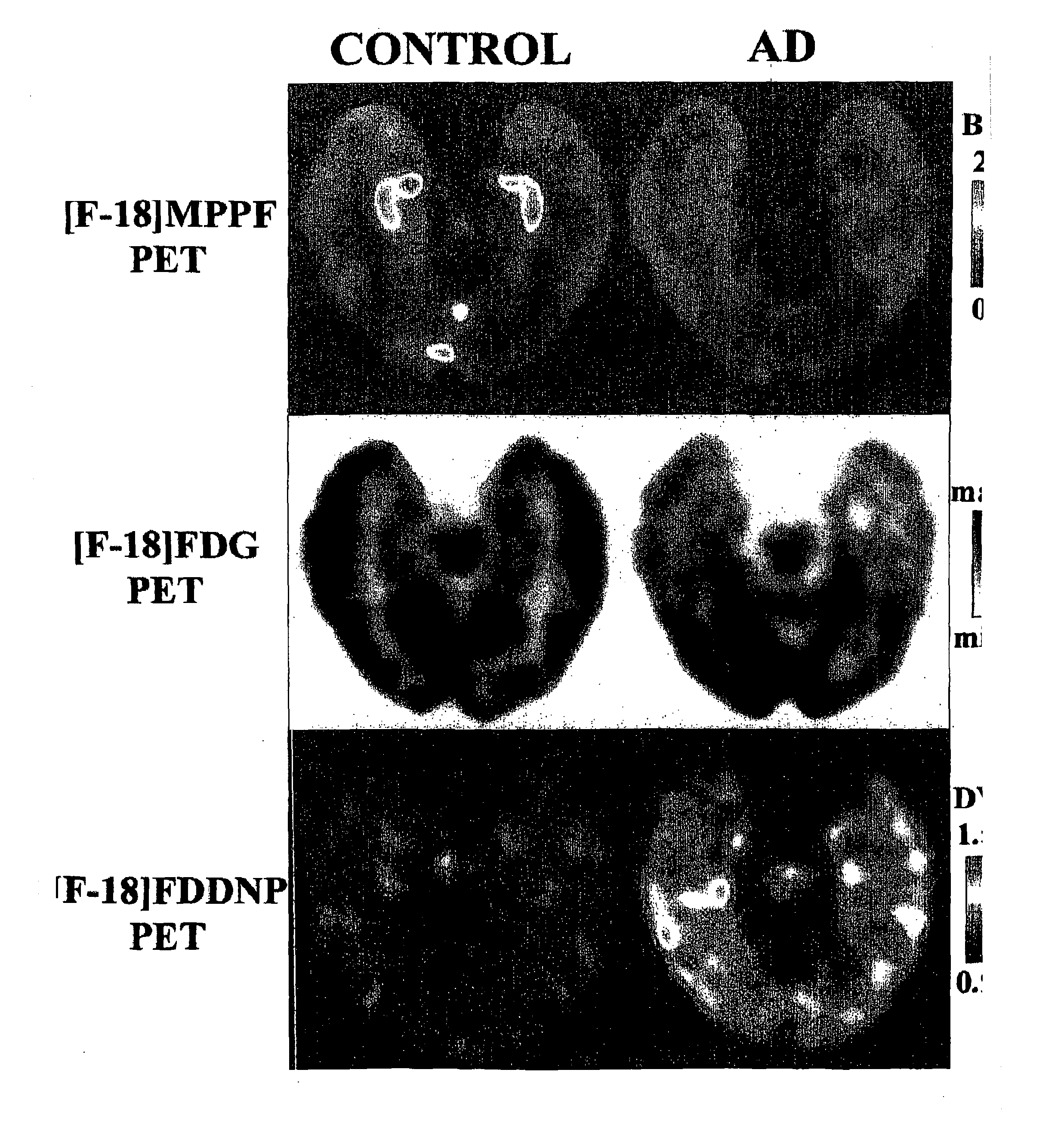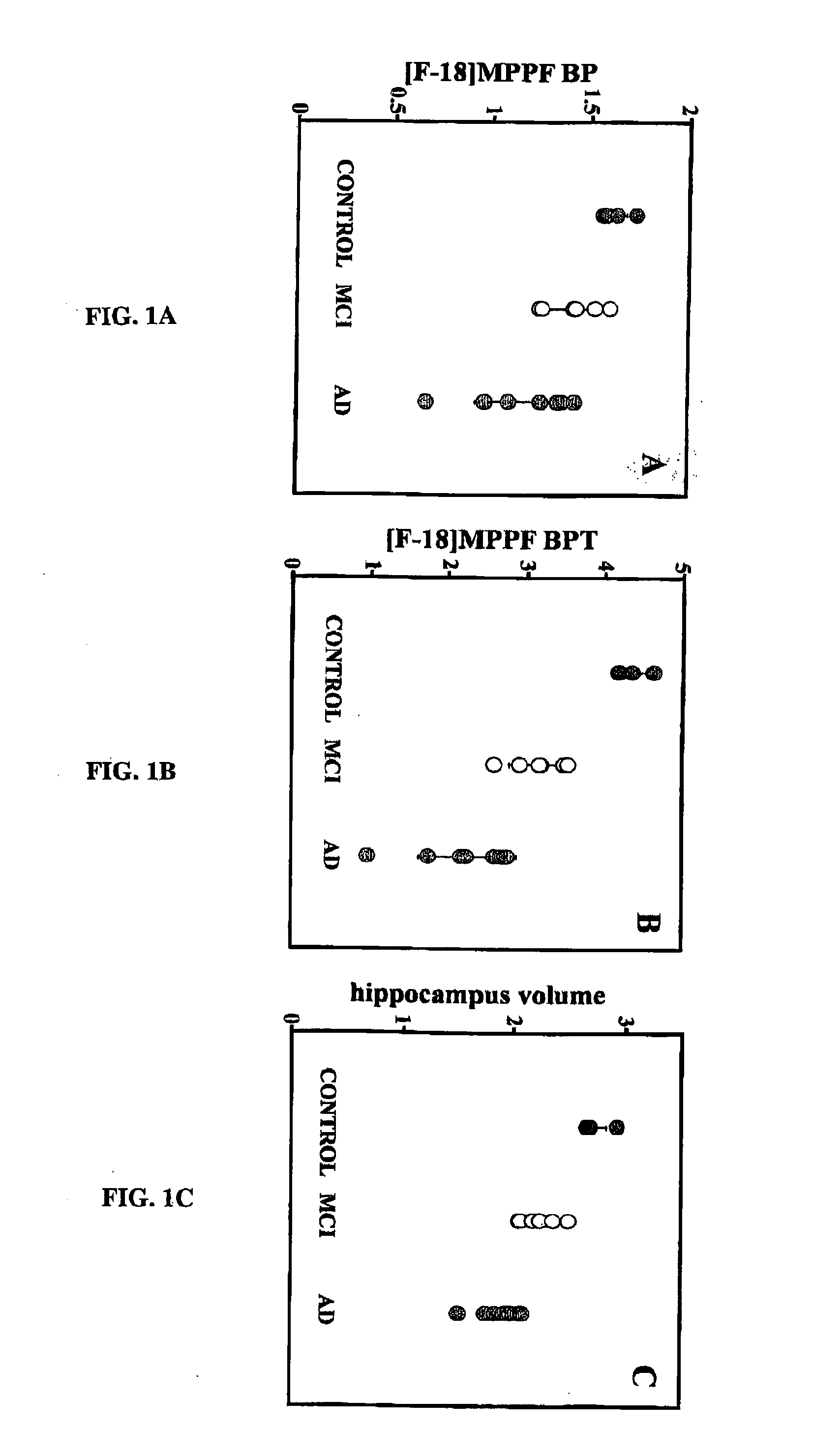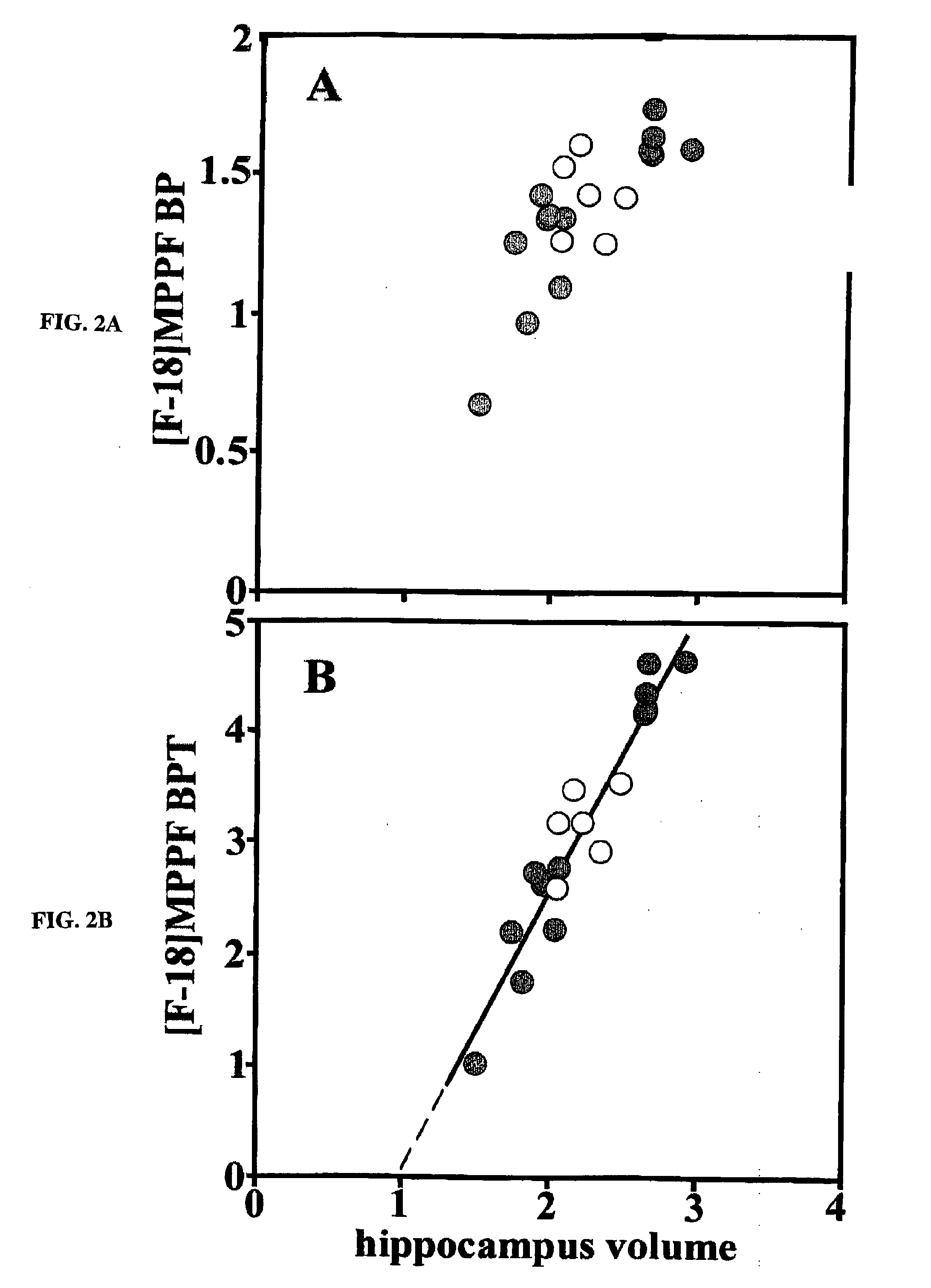Method for Detecting Alzheimer's Disease and other Forms of Dementia, and Measuring Their Progression
a technology of alzheimer's disease and other forms of dementia, applied in the direction of material analysis, biological material analysis, instruments, etc., can solve the problem of no reliable method for direct in vivo detection of neuronal cell loss in patients, and achieve the effect of showing some level of brain serotoninrgic system dysfunction
- Summary
- Abstract
- Description
- Claims
- Application Information
AI Technical Summary
Benefits of technology
Problems solved by technology
Method used
Image
Examples
examples
Subjects and Clinical Assessments
[0045] Nineteen subjects were recruited through referrals from the UCLA Alzheimer's Disease Center, the UCLA Neuropsychiatric Institute Memory and Aging Research Center, and private referrals and were part of a larger PET imaging study in AD. Written informed consent was obtained in accordance with the procedures set by the Human Subjects Protection Committee, University of California at Los Angeles. None of the subjects had a history of other neurological, medical, or psychiatric condition and all were free from selective serotonin re-uptake inhibitors, beta-blockers (e.g. pindolol) or anti-anxiety drugs, with known effect on 5-HT1A receptors. They all received neurological, psychiatric, and neuropsychological evaluations; an MRI scan; three PET scans ([F-18]MPPF, [F-18]FDG, and [F-18]FDDNP), and routine laboratory tests. APOE genotyping was performed on sixteen subjects who gave consent for it. Clinical diagnoses were made with investigators blind...
PUM
| Property | Measurement | Unit |
|---|---|---|
| Time | aaaaa | aaaaa |
| Time | aaaaa | aaaaa |
| Time | aaaaa | aaaaa |
Abstract
Description
Claims
Application Information
 Login to View More
Login to View More - R&D
- Intellectual Property
- Life Sciences
- Materials
- Tech Scout
- Unparalleled Data Quality
- Higher Quality Content
- 60% Fewer Hallucinations
Browse by: Latest US Patents, China's latest patents, Technical Efficacy Thesaurus, Application Domain, Technology Topic, Popular Technical Reports.
© 2025 PatSnap. All rights reserved.Legal|Privacy policy|Modern Slavery Act Transparency Statement|Sitemap|About US| Contact US: help@patsnap.com



